From interviews to product features, here’s what to do…
We connected writer Angella D’Avignon with our amazing PR team to come up with a handful tips to help you get valuable press around you and your artwork.
Now that you’ve got artwork and an impressive portfolio, it can be difficult to find your niche in the vast world of the ‘Net. Finding which blogs, publications and companies are looking for work like yours is a skill that you can develop with practice, but can do wonders for your career. Pitching, essentially, is selling your work to editors and publishers by convincing them that your artwork is perfect for their readers! This article will walk through the steps necessary to earn the ever-elusive online feature on you and your artwork.
1 | Get a lay of the land
What’s going on online? The beginning of this process is simply research. Start by identifying the types of publications or outlets you see yourself fitting into. You should be an obvious fit into whatever they’re currently publishing.
Editors–and media outlets at large–are looking for visually appealing and interesting products to feature. You can bank on them wondering “Will this be interesting to my readers?” With that said, find out what their readers find interesting and go from there!
If your designs lean towards home decor, look into home decor sites that your style most complements. Then, narrow it down by looking at their published articles to see what types of product roundups, lifestyle imagery, or that your artwork or products would fit into. Here’s one of Lisa Jayne Murray’s Art Prints featured on a product roundup on HGTV’s site…
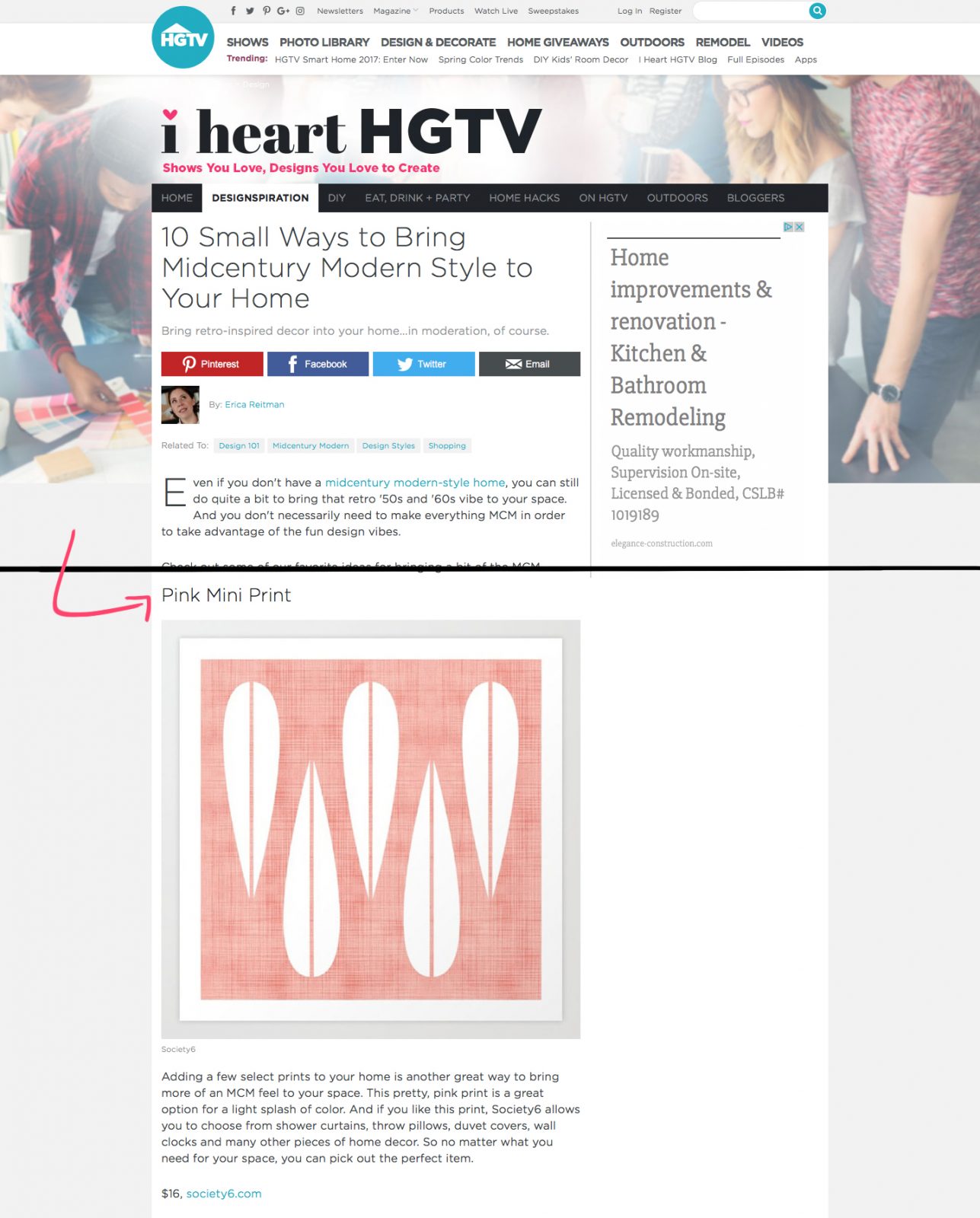
When you’ve identified the ideal or “dream” story or feature, find the mid-tier sites the big sites are looking at for inspiration. A step further, find the small sites that the mid-tier sites are looking at for inspiration. Very simply reverse engineering. You’ll have a higher likelihood of getting a feature from a smaller sitethan the big ones if you’re just getting started–and from there–sky’s the limit
Kemi Mai ranks spots by who’s already there: “I want to always be where my favourite artists are. When a publication or gallery contacts me, one of the first things I do is see if I’m a fan of any of their artists. Of course, I don’t exclusively limit myself to this, but usually the spaces I want to go after are those with good company.”
2 | Know who you are and what you want
Make it very clear to an editor or publication what you can offer them. Put together a cohesive collection of work for an editor or publisher to review. This can be artwork or products depending on what you’re pitching. Take it a step further and create a collection of mugs or a similarly specific product.
PRO TIP: Build a collection of your popular work or products right in your profile on Society6.
Along with sharing your work, give editors/publishers a quick background on who you are and what you do. Shorter is better. Make sure to point out your highest accomplishments. Editors love that kind of thing. You don’t have to brag. You just want to educate. This is exactly the type of info that helps a publication say “yes we’d like to feature you” because they have plenty of exciting things to write about. They’ll elevate you in front of their readers, and subsequently, they elevate themselves as a publication by listing out all the awesome things you’ve done. It’s a win/win.
Basically, consider getting press for yourself like a job interview. Who you want to work with is just as important as who wants to work with you. Define what success looks like for you and translate it into feasible, bite-size tasks.
Ask Robin Eisenberg, who’s had considerable success on S6 and beyond: “I look at what the aim/goal of the magazine is first to make sure there are no weird red flags or differences in fundamental beliefs that would be an issue or that I wouldn’t want to be represented by. I also look at their other pieces and their style/aesthetic to see how it would fit with my own work. If I’m excited looking at their content or hearing about their idea, I’m usually up for working with them or being featured as long as I have the availability.”
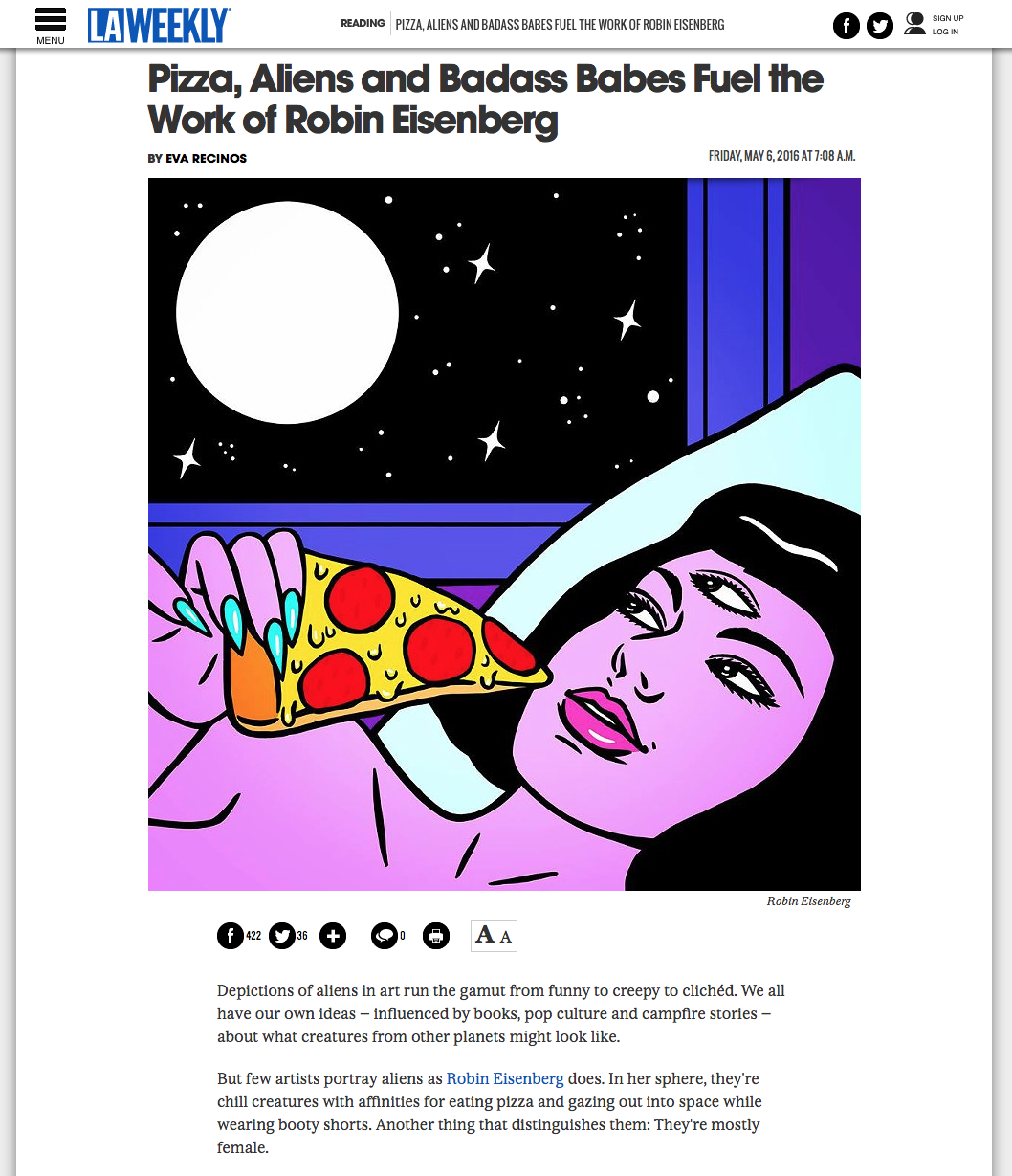
3 | Identify trends
Being able to tell what’s just about to pop is an art, and luckily, it’s one you can master. The key? Exposure and saturation. Constantly looking and paying attention to visual culture and learning what has staying power. If you’re seeing something pop up over and over again, that’s something to keep track of and analyze–especially if it’s something in your wheelhouse.
Society6 is also always a great resource to identify trends. Find out which work is popular and how to leverage the popularity of certain colors, designs and patterns with your own signature spin on it. Comb Instagram and Pinterest and read magazines to find out what’s seasonally relevant and trending. Trend reports are your friend. It’s as easy as googling “Trend Reports 2018”. Since the internet is mostly run on sharing algorithms, you’ll start picking up what’s cool pretty quickly.
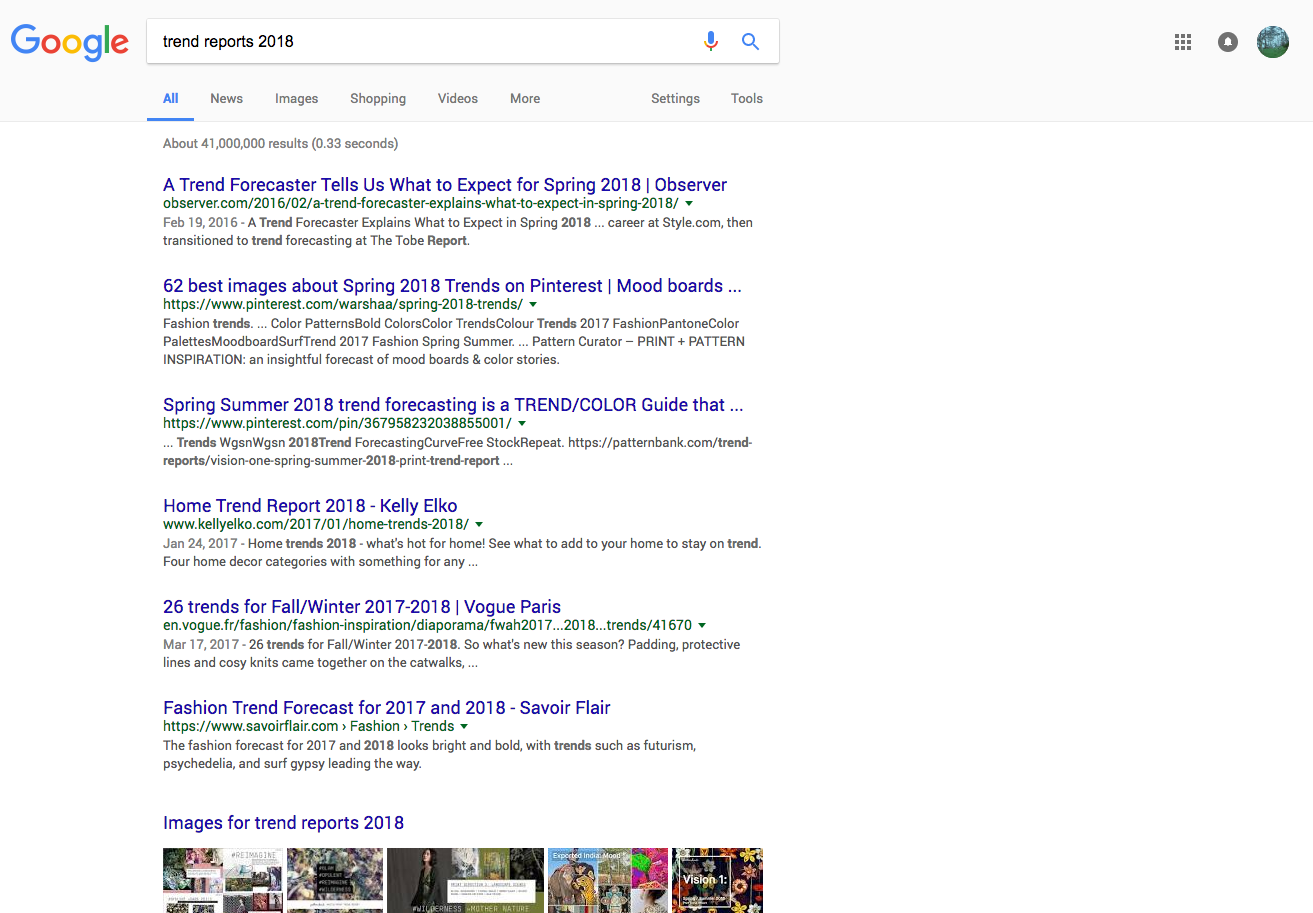
Finally, recognize trends in your own work. Is something working? Take note. Don’t be afraid to stretch your wings, but sticking to a style or motif that gets you work is something to stick with.
Worth noting about timelines and trends:
- Online publications work with a short lead time typically of 2-3 weeks. i.e. If you have a new series or product launching June 1st, plan to send info to editors at least 2 weeks before the launch to give plenty of time for them to work on a story.
- Print magazines work with a longer lead time of 3-6 months. For example, in May, editors are beginning to work on Fall issues.
- Keep in mind upcoming trends such as holidays or seasonal themes to pitch press ahead of time
- Christmas begins in July! The preliminary work by editors for coveted holiday gift guides begins in July–so get crackin’!
Tobias Fonseca has advice: “Always with eyes open, I search for the first pages in every PoD sites, popular instagram tags can become a t-shirt too. It’s hard, but you have to combine timing and concept. Some are easier like special dates as xmas, you can create in advance and wait for the best time to post.”
Jenny Liz Rome admits: “I’m a secret trend hunter. Admittedly, my current series has been created around my continued obsession into the Nordic interiors wave. I did extensive research into what pieces were selling best, and what are the key elements that make them so popular. I took that information and applied it to my new work.”
4 | Get into hustle mode and start pitching
You’ll fine tune your process along the way!
Ask yourself and your portfolio: “What makes me stand out?” How does it translate to what you’ve decided to pitch? What’s your hook? In publishing, we call this a “peg” – i.e. what relevant or timely story is your pitch geared towards? What interesting story or fascinating process makes your brand unique? What’s something an editor can emotionally gravitate towards. You’re competing with potentially thousands of others vying for a spot to be featured by an editor or publisher looking for the perfect thing.
These tips will help you stand out from the rest.
- Editors like color, anything that pops on a white background is good
- If pitching product, editors always consider price-point based on their audience, reference other brands and products they feature to see what price-point they favor (under $50? under $100)
- Press often need high resolution images of artwork OR product images on white background to include items in shopping stories for both online and print stories
- Always include links to where your artwork can be purchased
- Keep email pitches concise and creative, always include a who, what, where and when.
Take it from Camille Chew: “A unique, distinct, and consistent style will help you stand out from the crowd. Personal style can be difficult to cultivate because it only comes out of making tons of art. If you try too hard to force a stye you may find yourself simply copying other artists or being unhappy and frustrated with your results. Ultimately though, your style will develop through practice and dedication.”
Getting press for yourself, your artwork and your products is a bit of a dance, but once you’ve established a relationship with publications, pitching more work to them gets a whole lot easier. That could mean getting a feature on Booooooom or maybe your latest Wall Tapestry gets included in a popular Apartment Therapy article. All in all, start small and build up a nice contact list. As your craft evolves, so will your accessibility to larger, more reputable publications.
Feature Image by The Red Wolf
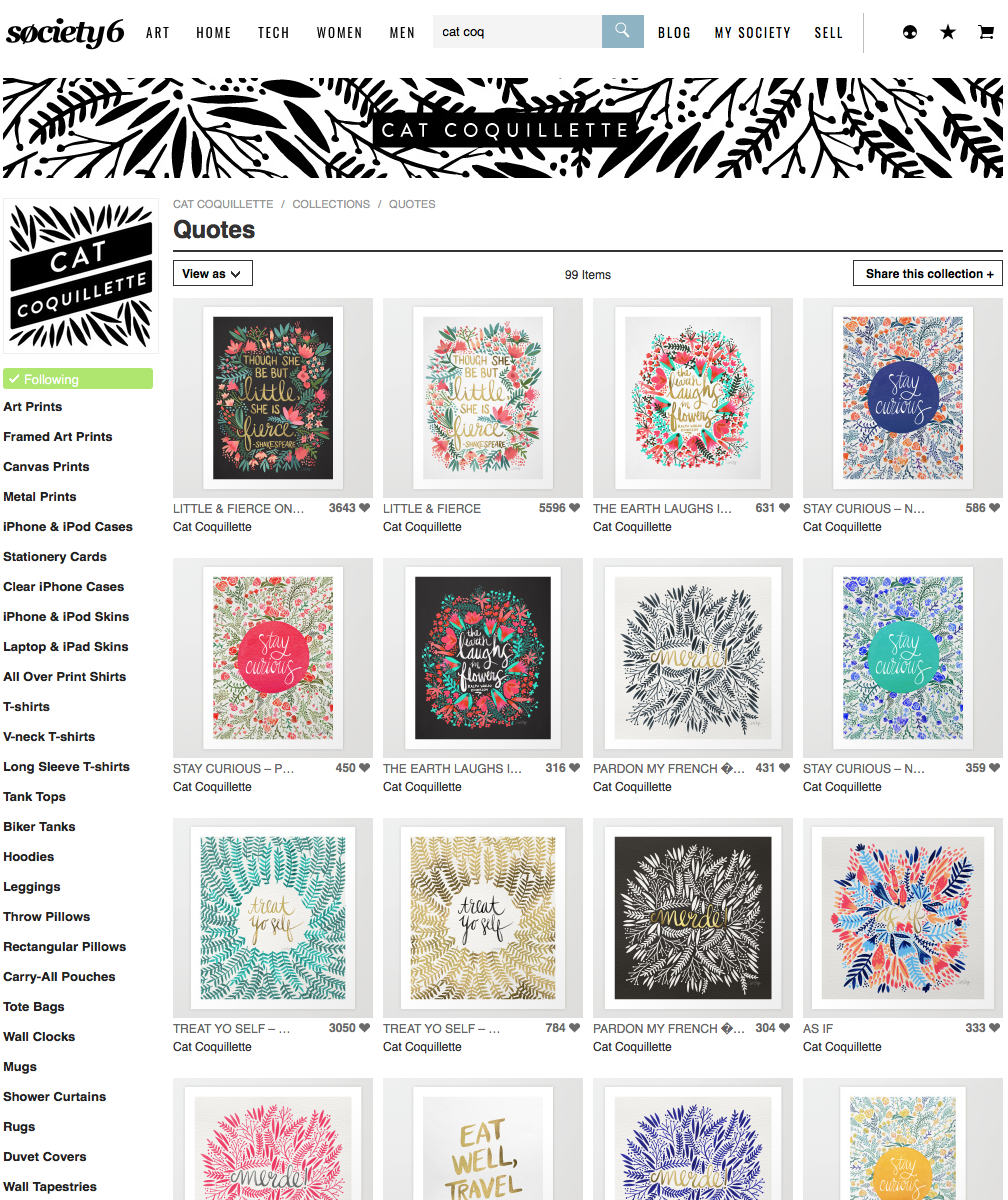
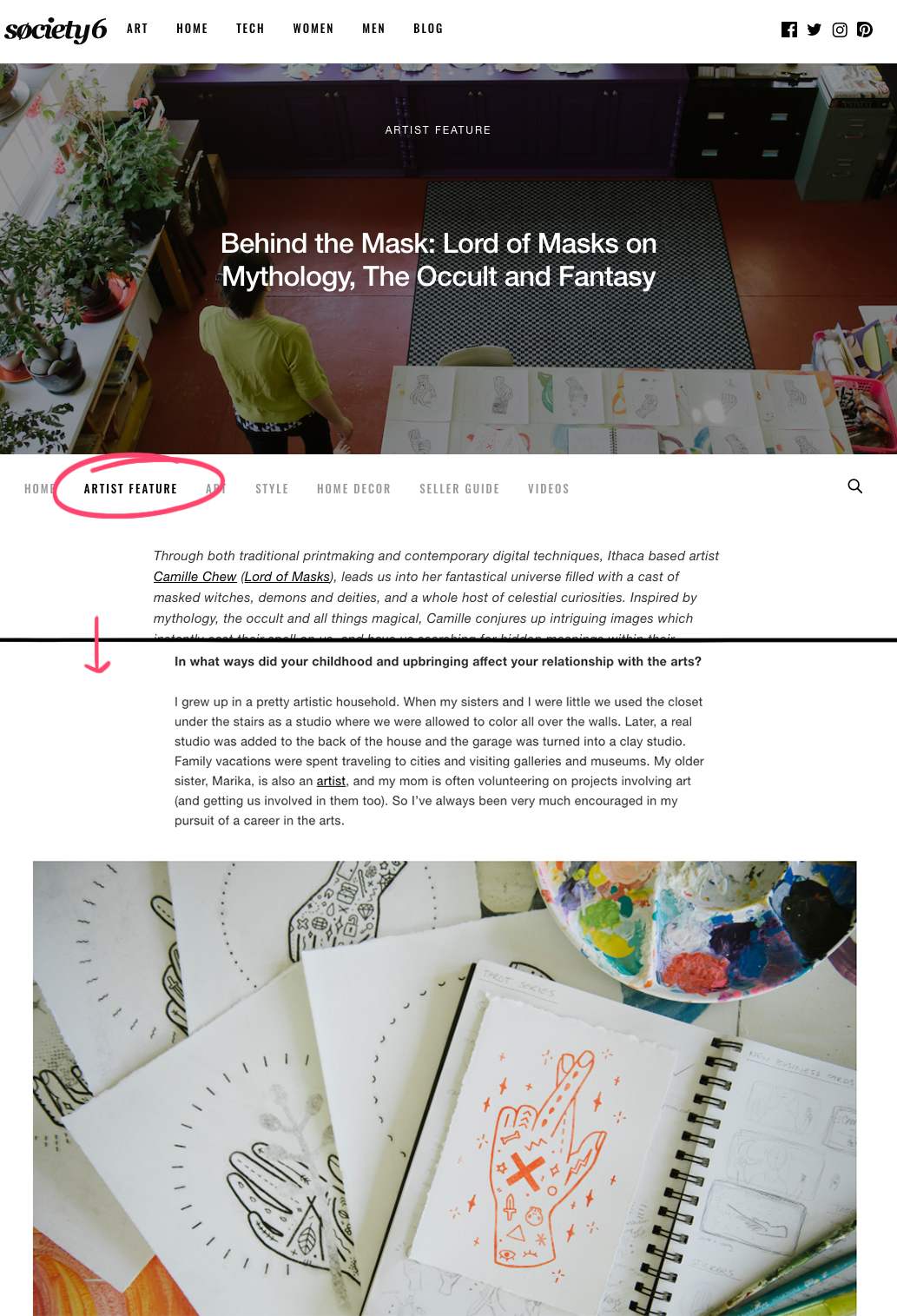
Comments